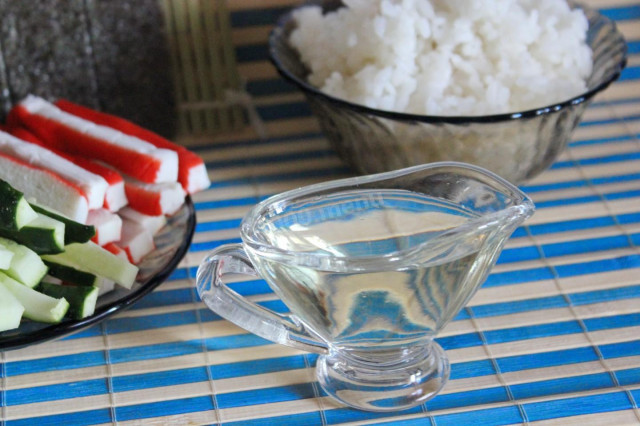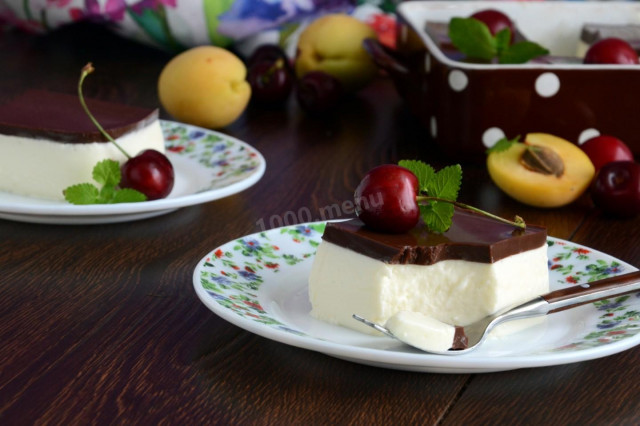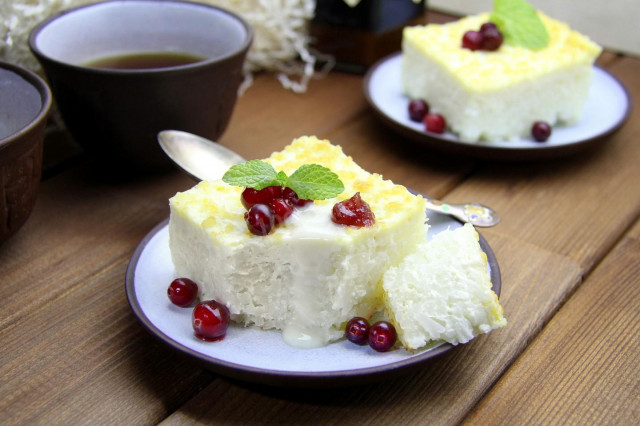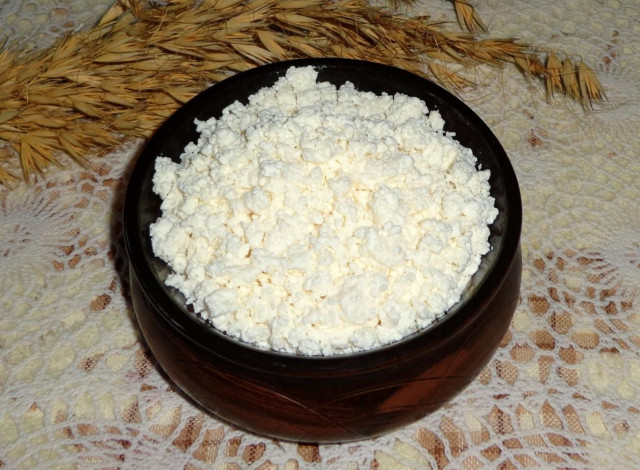Composition / ingredients
Step-by-step cooking
Step 1:
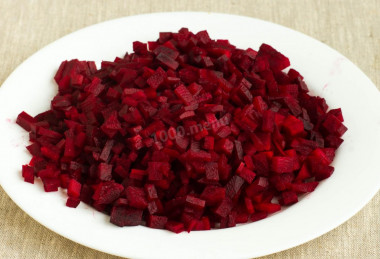
How to cook vegetarian borscht? Wash the beets, cut into small cubes.
Step 2:

Seeds together with coriander slightly dry on dry (without oil) at the bottom of the pot, where the borscht will be cooked.
Step 3:
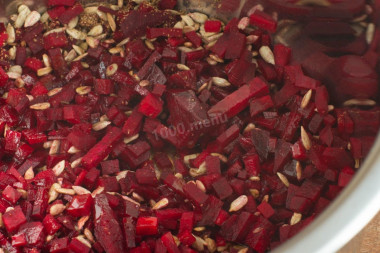
Add beetroot and vegetable oil. Mix it up.
Step 4:
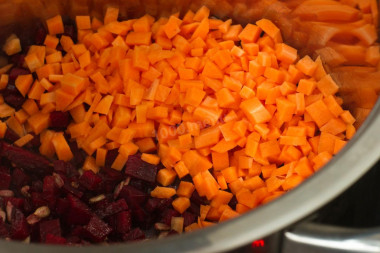
Add the carrots cut into small cubes. Mix it up.
Step 5:
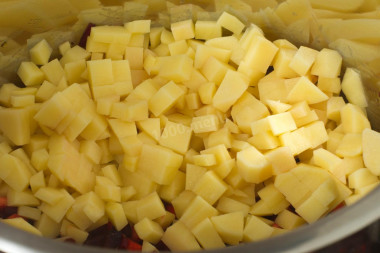
Add potatoes, peeled and cut into small cubes. Mix it up.
Step 6:
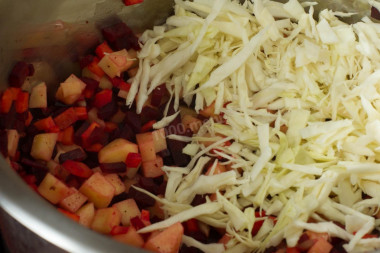
Add chopped cabbage.Mix it up. Pour the already fried vegetables with boiling water. Add tomato, spices, salt, dried dill.
Step 7:
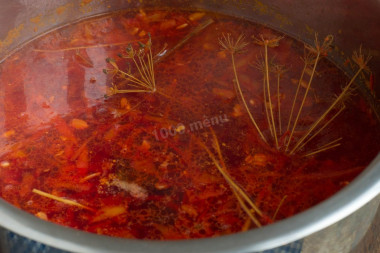
Bring to a boil and cook on low heat for at least 30-40 minutes.
Excellent borscht with rich taste!
Important! Regardless of whether the amount of water for soup is indicated in the recipe or not, it is best to focus on your own preferences (thick or more liquid soup you like), as well as on the size of your pan and the products taken for cooking. Do not forget that the author has his own view on the amount of meat, potatoes, cereals and other ingredients in the soup, which may not coincide with yours. In practice, this means that if you are cooking for the first time, you should not cook a whole pot at once. Make a soup for tasting - for one or two people. To do this, reduce the amount of all ingredients according to the recipe to 1-2 servings, and take the amount of water from the calculation: from one cup per serving - if the soup is very thick, to 1.5-2 cups - if more liquid. Do not forget to take into account that part of the liquid will boil off during the cooking process. After tasting a small portion of soup, you can adjust both the amount of liquid and the proportions of ingredients to your taste. In the future, like most experienced housewives, you will be able to pour water for soup and lay the ingredients “by eye".
Since the degree of salinity, sweetness, bitterness, sharpness, acid, burning is individual for everyone, always add spices, spices and seasonings, focusing on your taste! If you put some of the seasonings for the first time, then keep in mind that there are spices that it is especially important not to shift (for example, chili pepper).
Caloric content of the products possible in the composition of the dish
- Ripe potatoes - 80 kcal/100g
- Baked potatoes - 70 kcal/100g
- Mashed potatoes - 380 kcal/100g
- Boiled potatoes - 82 kcal/100g
- Potatoes in uniform - 74 kcal/100g
- Fried potatoes - 192 kcal/100g
- Beetroot - 40 kcal/100g
- Dried beetroot - 278 kcal/100g
- Boiled beets - 49 kcal/100g
- Carrots - 33 kcal/100g
- Dried carrots - 275 kcal/100g
- Boiled carrots - 25 kcal/100g
- Bay leaf - 313 kcal/100g
- Ground black pepper - 255 kcal/100g
- Dill greens - 38 kcal/100g
- Vegetable oil - 873 kcal/100g
- Tomato paste - 28 kcal/100g
- Dried whole safflower seed kernels - 615 kcal/100g
- Sunflower seeds - 560 kcal/100g
- Salt - 0 kcal/100g
- Water - 0 kcal/100g
- White cabbage - 28 kcal/100g
- Boiled white cabbage - 21 kcal/100g
- Paprika - 289 kcal/100g
- Ground coriander - 25 kcal/100g
- Allspice - 263 kcal/100g



